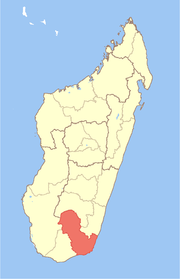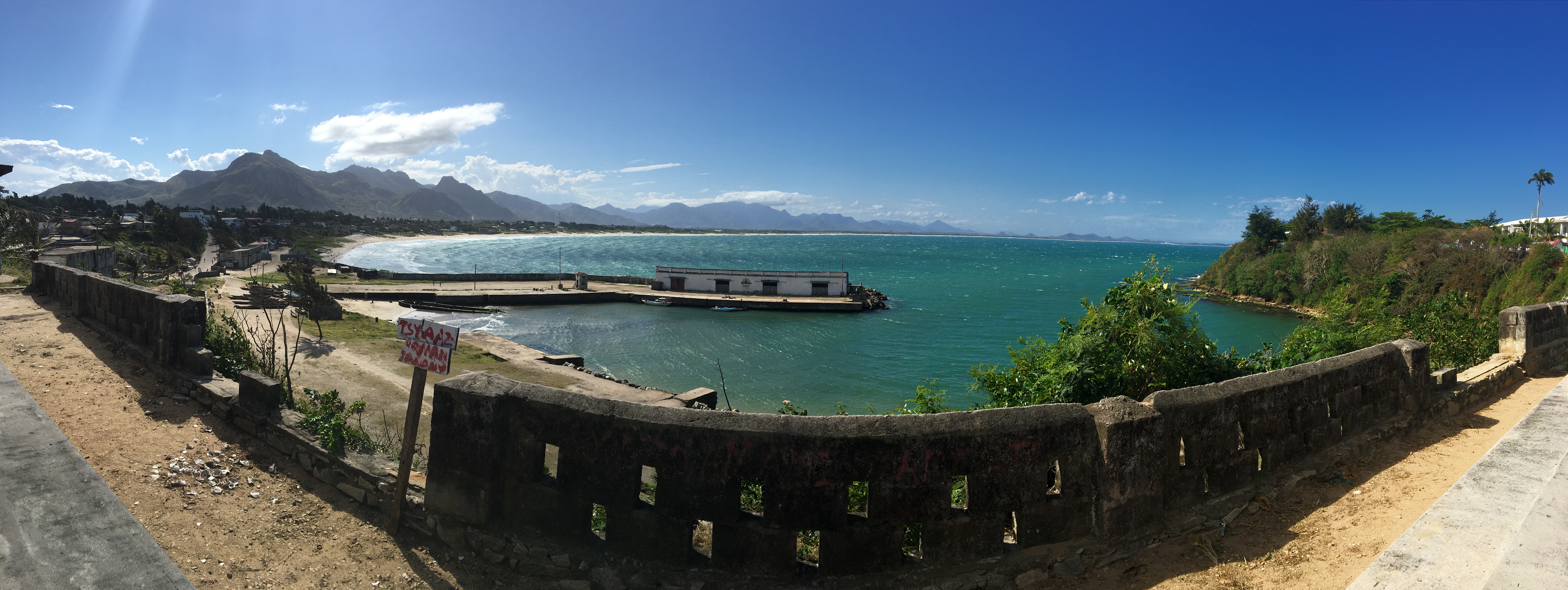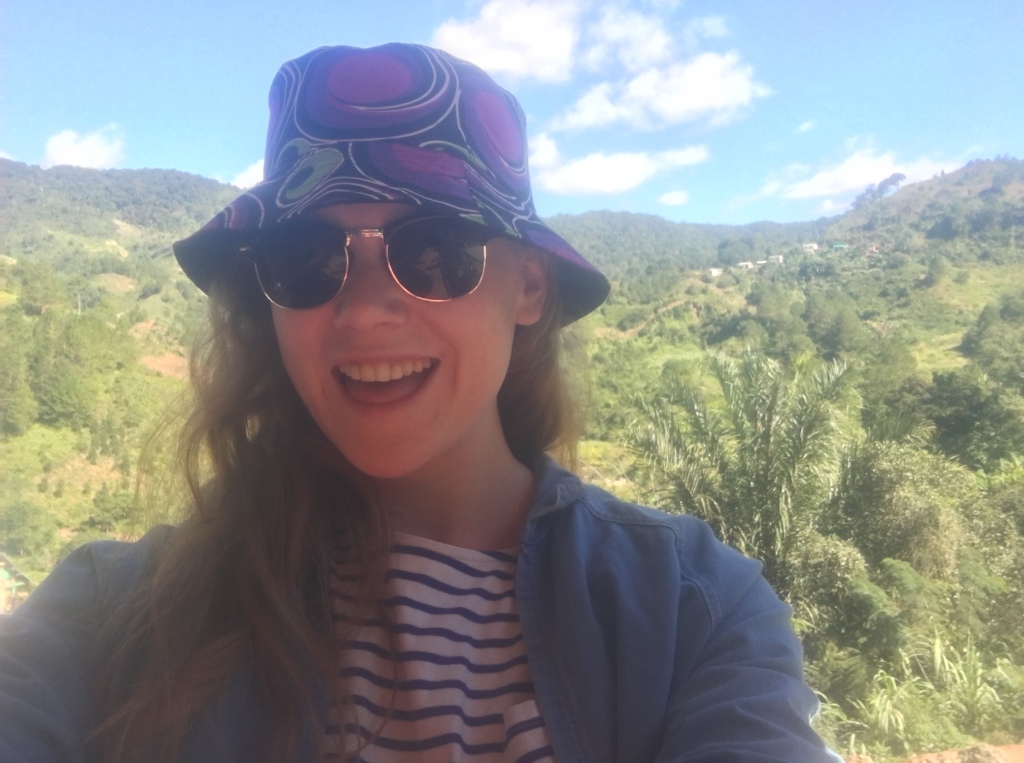5. Antananarivo
Antananarivo, lovingly known as “tana” by residents and expats alike, is really the heart of Madagascar. It has the largest population of any city in Mada, and you can certainly tell when you walk through the streets of Tana. International flights will land into Ivato airport in Tana and many people spend a night or two there not knowing what to do with their time. It’s easy to think that because it’s a big urban space there isn’t much to do, but that’s not the case.
Tana has without a doubt the best restaurants in Madagascar! You can get a range from Korean BBQ to Raclette fondue to classic French cuisine. Some of my favourite restaurants in Tana include La Ribaudiere, Nerones, KimStar, KuDeTa and La Verangue. There is only one place you should even consider for a spectacular breakfast overlooking the city, and that’s Lokanga, at the top of the highest point in Tana.
If you don’t want to eat all the time (like me) there are other things to do. Tana has the biggest outdoor market in Madagascar, named Analakely. If you like shopping for bargain clothes or souvenir items this is your heaven! You can find some diamonds in the rough in Analakely and get a real sense of the lives of the street vendors. Do be careful carrying wallets and bags as pickpockets can frequent these areas. The Digue is a market on the outskirts which has the best artisan souvenirs and gifts, worth a visit if you have time.

In the evenings the city comes to life, with a selection of small bars and larger nightclubs. In the Isoraka sector you can find a whole street dedicated to clubs with Malagasy/French music and a great atmosphere. Mojo is popular with young people in Tana but if you want the full experience go to Taxi be, which is an outdoor venue with live music and pizza all night!
Another great thing about Tana is its proximity to surrounding towns you can visit. There are a number of short trips you can do from Tana. You could ride bikes round lakes and natural geysers at Ampefy (4 hours from Tana) or go to see lemurs in Andasibe (4 hours from Tana by car), all feasible for weekend trips of 1/2/3 days. The best way to travel in a group is to use Drive Mada (see the website) and hire a car and driver for around £30 a day.
I may be a bit biased by Tana will always have a special place in my heart, and it gets a lot of bad rep for being polluted and dangerous, but I would argue that’s just city life (you can take measures to stay safe) and the city is equally as worth visiting if you want the full Madagascar experience.
4. Antsirabe
I almost didn’t include Antsirabe on the list because it’s a very small town in comparison to the other places in this list, and its probably best just for a weekend short trip. However, that being said Antsirabe has something special about it that is worth seeing.

A four-hour drive from Tana, Antsirabe is full of colonial French architecture and has a very antique feel to it. The hotel Grand Thermes looks like its straight out of an estate in the south of France, with its croquet lawn and tall pine trees. There is even rumours of a ghost in one of the rooms, which they don’t let guests stay in! I really rate the cosy little pub restaurant called l’insolite which has a diverse menu, however there’s many little restaurants around that cater to all your needs. Take a look at the old train station on the high street and try to arrange a trip to Lac Tritiva. The lake is a half hour drive away and is an old volcanic lake that is unlike anything else I’ve seen in the world. You can choose to do a zip-line over the lake, but it is very cold! A guide will take you around and tell you local stories about the lake for a small charge.

If you ask a local guide, they can take you to small artisan workshops that Antsirabe is famous for. You can go and watch Zebu horns (Zebus are like cows with a hump) being made into jewellery and souvenirs or see how local people use old materials and recycle them into gifts and sculptures. This is all free!! You could also go and see the gemstones workshop that has sapphires, or watch them doing amazing intricate wood carvings.
3. Tulear
The name is a bit misleading. I do recommend a visit to Tulear, but the real adventure awaits you in Ifaty/Mangily, which is 30KM north of Tulear in a beach resort. The white sand beaches and crystal blue sea is completely worth travelling to the south of the country. While you rest in gorgeous beach bungalows, you can arrange trips to the spiny forest, which has miles of Boabab trees which are over 2000 years old. We took a zebu cart ride and got to see the forest from the cart, which was a bumpy but cool ride. Or you can do a trip out on the sea. The best snorkelling I’ve ever done was in Ifaty, off a fishing boat for just under £10 for the day!! If you enjoy diving there’s a few established diving centres along the beach at Mangily and you can also take part in some conservation work if you’re interested. This small and quiet place is so peaceful and the perfect break from travelling on the road.

I would recommend the restaurant “Blu” in Tulear centre ville for eating or having cocktails watching the sunset. The sunset is in fact the best watched from the beaches of the south, where you can catch undisturbed fisherman bringing their boats in for the night. “The garden” is a fantastic artisan ice cream parlour and restaurant with stunning food. You go through a hidden archway into a gallery which is outside and stunning sculptures surround you.
It gets extremely hot in Tulear region so pick when you go carefully. It frequently reaches 38 degrees in the summer months December-March, which wouldn’t be so nice on the beach. From Tulear if you wanted to you could go to Isalo which is a large national park which resembles the grand canyon, and is great for hiking. You will face a 6 hour drive from Tulear at least, but the road is one of the best in Madagascar and driving through hundreds of kilometres of nothingness is actually quite refreshing after visiting busy cities. (I won’t talk about Isalo here but there’s some good information online.)
.
2. Ile Sainte Marie
Without a doubt Sainte Marie is one of the most picturesque places in the whole of Madagascar. It’s long sandy beaches and bright blue sea is accompanied with a true island feeling which gives off a Caribbean vibe. Although Sainte Marie is a lot more popular with tourists, you still don’t feel overwhelmed by foreigners. A lot of the restaurants and hotels are owned by French expats settled on the island, but if you go further out of the main port you go through small villages and communities just like other areas of Madagascar.
Getting to Saint Marie can be an adventure in itself. You can fly there from Tana or internal airports for around £150 return. But if like me you choose the cheaper alternative route its certainly not easy! You can take a cotisse (minibus) from Tana to Tamatave which is 8 hours. Then you stay overnight in Tamatave and go to the boat office for 4am. You can choose either Cap Sainte Marie or El Condor, both of which provide a shuttle bus to a port north of Tamatave and then a ferry crossing. If you get sea sick I do not recommend el condor, which has a shorter bus ride (about 5 hours) but it’s a 3 hour crossing in rough sea in a boat with no windows…..They also hand out sick bags at the beginning just to give you an idea of what you’re getting yourself into.
I went in July, which was the perfect time of year for whale watching! Humpback wales migrate through the Mozambique channel at certain times of the year, and you can go whale watching for a low price of around 100,000 ariary (around £25). We went only about 10 mins boat ride from the beach and saw around 8 or 9 large humpback wales, honestly it was a magical sight to see them jumping out of the water, though a bit tricky to get a good photo!

For a bit of adventure, you can hire scooters or moto cheap from most hotels or in the port town centre. We rode them up the rocky road around 40KM north right to the tip of the island which does take about 2 hours depending on the state of the road. We stopped for lunch with a view and went to see the natural pools which have a lot of cultural importance in the area. You can swim in the natural pools but watch out for waves!! I have to say, this trip isn’t for the faint hearted as you need to have some confidence on the roads (although there is practically no traffic.)
If you fancy a night out, there are several excellent bars around the hotels and even a discoteque nightclub which opens at the weekend and takes music requests. It doesn’t get busy until at least midnight so stick with it!

The Ile aux Nauttes is an even smaller island which you can reach by a short pirogue (canoe) about 5 mins across a small stretch of the sea. The beaches on Ile aux Nauttes are unbeatable and I could easily stay there for the rest of my days! Some people stay there in beach bungalows or hotels which are all really nice. If you are on a budget, there is a hostel called Chez Nath managed by a very lively French man who really takes care of his guests, he’ll be happy to share stories of st tropez and Madagascar with you over a cocktail or arrange any trips you like.

Sainte Marie really is unique to Madagascar, with its history of pirates and isolation from the mainland, it’s become a tropical paradise with lots of things to do.
1. Ranomafana
The name Ranomafana translates to “hot water” in Malagasy language. The valley where the town sits is deep within the rainforest and has a large thermal spring which feeds into the villages. Ranomafana is the best place to go to get a sense of rural Madagascar and get to see some incredible wildlife. I have actually stayed here 5 times because I love it so much.
There are a few places to stay, but I recommend Kariboutel, which has bungalows on a hill overlooking the valley and waterfall. The rooms are really cosy and there’s usually hot water, for around 100,000 a night (£25) which isn’t too bad. There really isn’t much choice for places to eat because its quite a small town. However, you can get a lovely dinner at Centrest and there’s a few others in the town, as well as an awesome karaoke bar for evening activities.

The highlight of Ranomafana must be the hike. You can choose the length of your hike from 2, 4 to 8 hours or even do an overnight if you want. There are so many animals to be found here such as different species of lemurs, geckos, chameleons, stick insects and more. I would say a 4 hour hike is more than enough for you to see everything. If you have time, I recommend doing a night walk, where a guide will take you down the road at around 7pm (it will be dark by then year-round) and he’ll bring a flashlight so you can see the famous mouse-lemur, large chameleons and some very cool moths.

If you like a bit of adventure, one of my favourite activities is kayaking on the river in Ranomafana. There is a guy called Patrick that’s been our reliable kayak guy for a few years now. He will take you in inflatable kayaks on a 2 hour trip round the river through the backwaters, past the illegal rum smuggling routes and small rapids. It’s not hard work because the river is usually quite calm, but the views are unreal and you can’t miss out on the opportunity! I think I paid around 100,000 ariary (£25) for the kayaking for one person. If you want Patricks details send me a message, he’ll be glad to welcome new customers.
The local swimming pool is outdoors and fed by the hot spring. It is seriously hot and really cool to see the steam off the pool whilst being surrounded by rainforest. It’s really cheap to get in (less than (£4) and worth a visit.

Some honourable mentions that I won’t go into detail about now but worth checking out: Diego suarez, Nosy Be, Mahajunga, Mahambo and Andasibe.
Thanks for reading!













